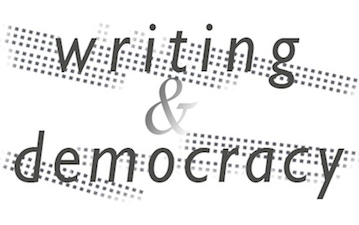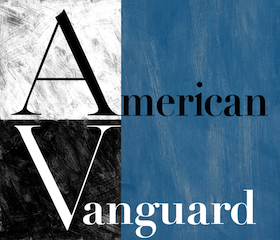12TH STREET : FROM RELIC TO REVIVAL: An Interview with Renè Steinke
What is now the annual literary journal 12th Street, launched in 2008 by the Riggio Honors Program: Writing and Democracy, began in the 1940s as 12th Street: A Quarterly. Back in the days before it expanded to include a wider array of interdisciplinary divisions, The New School for Social Research was the overarching name of our University. Today that name belongs to one of the six current divisions of The New School, along with Parsons: The New School for Design, Eugene Lang: The New School for Liberal Arts, Mannes College: The New School for Music, The New School for Jazz and Contemporary Music, The New School for Drama, and The New School for Public Engagement (which houses the Riggio program). In 1944, students of The New School for Social Research established 12th Street with the following Manifesto:
PROSPECTUS
Every new publication needs a raison d’etrê, particularly
in these times. Our plan is to publish, four times a year,
the work of students and alumni of the New School and
the Graduate Faculty of Political and Social Science.
The fields we hope to cover will in general correspond
to the curriculum of the New School: the social sciences,
philosophy and psychology, and the arts; there will also
be some creative writing.
Over the Quarterly’s span through 1950, the journal evolved to welcome an increasingly diverse spectrum of contributors, opening itself to submissions from outside its institution, and reaching further into the creative pool. After a hiatus of several decades, its mission was rediscovered and re-imagined by 21st century New Schoolers. While the modern day 12th Street primarily serves as a literary journal, it continues to embody critical thinking across multifarious fields.
Riggio: How did the revival come about?
Renè Steinke: At a Riggio student reading, a few of us among the faculty began discussing how strong the student work was, and it was suggested that we should start a literary magazine. Around the time the funding was approved, I was asked to help guide the first staff in configuring a vision and mission for the magazine. Around that time, Robert Polito discovered the old issues of 12th Street from the 1940s, and the revival idea was born.
Riggio: Who started the journal and what was the process like? Was it you, or did students think of it and seek you out? How did you come into the picture?
Renè Steinke: I was new to the Riggio program, and had very recently served as Editor of The Literary Review. Because of my background, I was asked to help guide the students in forming their vision and design for the magazine, which has remained pretty consistent through the history of 12th Street.
Riggio: How was the idea conceived to do so through a revival of the NSSR quarterly? I know you mentioned that you aren’t particularly familiar with the ancient history of 12th Street, but how was it re-discovered and treated?
Renè Steinke: As far as I know, Robert Polito discovered the old issues of 12th Street at a second-hand bookshop, and brought them in to show the students and me. When Brian McMullen was brought in as our designer, he suggested incorporating a version of the old logo, and we decided to take it further so that each issue also includes other archival elements. It’s one of the things that makes 12th Street distinct.
Riggio: What was the original selection process for editors and staff like for 12th Street and how is it different from today? How has it changed throughout the years?
Renè Steinke: The process has remained the same. Students apply to be editors, and the advisory board selects those positions. Everyone in the Riggio program is welcome to serve on the staff as a reader. More recently, students have also been allowed to earn credit for working on the magazine.
Renè Steinke is the Faculty Advisor to 12th Street and has previously taught in the Riggio Honors Program: Writing and Democracy. Renè has recently been named the Director of the MFA program in Creative Writing, where she continues also her role as Professor of creative writing and literature. She is the author of the novels The Fires and Holy Skirts, which was a finalist for the 2005 National Book Award. Her writing has also appeared in Bookforum, Vogue, The New York Times, and TriQuarterly. She lives in Brooklyn.

